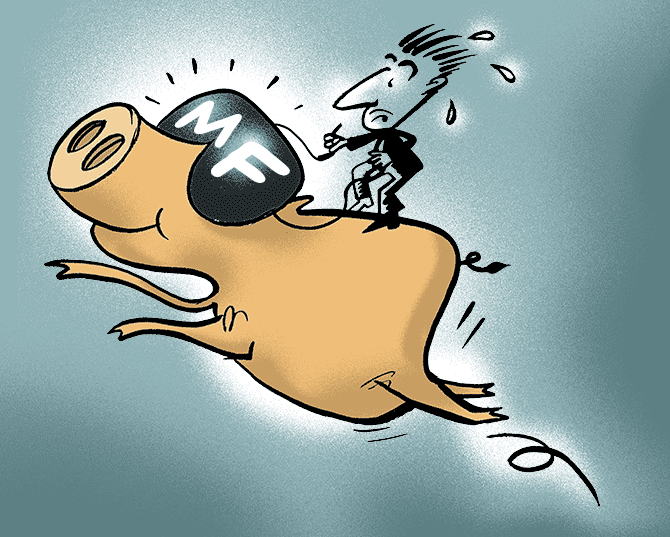 | « Back to article | Print this article |
A large proportion of passive funds has beaten actively managed large-cap funds with average one-year category returns for large-cap at 10.2 per cent.
Ashley Coutinho reports.

Passive funds that track benchmarks indices are not popular in India.
Investors here prefer schemes managed by fund managers, also known as active funds, mainly because of the perceived ability of these to beat returns of the underlying benchmarks and generate the so-called alpha.
A large proportion of passive funds has, however, beaten actively managed large-cap funds in the last one year.
The average one-year category returns for large-cap funds stood at 10.2 per cent, considerably lower than the 15.8 per cent and 13.7 per cent given by large-cap exchange-traded funds (ETFs) and index funds (largely tracking the Nifty and Sensex indices), respectively.
"It has been a selective rally this year, and fund managers have largely failed to get their stock selection right. In particular, managers were under-allocated in IT stocks. This has resulted in underperformance of their schemes as these stocks move up quite sharply in the past few months," said Kaustubh Belapurkar, director, fund research, Morningstar India.
Active funds have remained outperformers over longer time frames.
Average category returns for large-caps stood at 10.48 per cent for a three-year period, compared to 10.44 per cent and 10.2 per cent for large-cap ETFs and index funds respectively.
Again, active funds turned out to be clear winners over a five-year period, with a difference of over 200 basis points over passive funds.
Assets of equity schemes form about 5.5 per cent of the overall market cap in India.
In comparison, foreign portfolio investors and insurance companies own more than 25 per cent and 10 to 12 per cent respectively, according to experts.
"In the US, only 10 to 15 per cent of the active funds manage to beat the benchmark indices because they form about one-third of the overall market cap. In India, too, as the proportion of mutual fund equity assets has increased beyond 10 per cent, a greater number of active funds will start underperforming," says Belapurkar.
The recent change in Securities and Exchange Board of India norms will also affect the performance of active large-cap funds.
With a stricter definition of what constitutes a large-cap, fund managers will no longer be able to change styles, known in sector parlance as 'style drift', to just add to the returns.
For instance, until now, it was common for large-cap funds to increase allocation to mid-caps.
This was to give a defined structure to the portfolio as the mid-caps were loosely defined. This will no longer be the case because, according to the new definition, large caps will necessarily have to invest in the top 100 stocks in terms of full-market capitalisation.
When viewed in the context of another of Sebi's expected proposal to benchmark the returns of equity schemes against total returns index (TRI) in lieu of a simple price return index, the overall alpha for equity schemes (especially large-cap funds) may get substantially affected.
The introduction of TRI is expected to shave off 1.25 to 2 per cent (the average annual dividend yield for Indian equities) from the returns of equity schemes.
Active funds typically charge 2.5 to 3 per cent in expenses, compared with 0.5 to 0.05 per cent charged by index funds.
Illustration: Dominic Xavier/Rediff.com